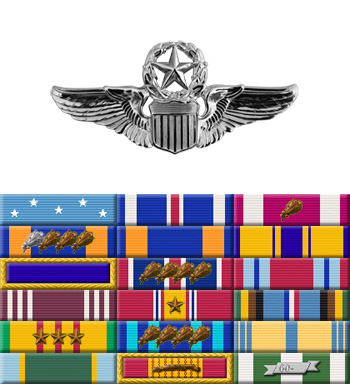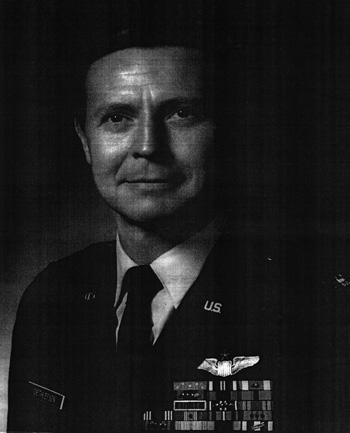
|
Merlyn H. Dethlefsen |
 |
|||
| Rank, Service | ||||
Colonel O-6, U.S. Air Force |
||||
| Veteran of: | ||||
|
||||
| Tribute: | ||||
Merlyn Dethlefsen was born on June 29, 1934, in Greenville, Iowa. He enlisted in the U.S. Air Force on January 19, 1954, and was commissioned through the Aviation Cadet Program on June 8, 1955. Dethlefsen served as a Navigator on C-124 Globemaster transports at Dover AFB, Deleware, from February 1957 to January 1959, and then entered Undergraduate Pilot Training at Bainbridge AFB, Georgia. After receiving his pilot wings in February 1960 and attending combat crew training, Dethlefsen flew F-100 Super Sabres with the 9th Tactical Fighter Squadron at Spangdahlem AB, West Germany, from January 1961 to February 1965. He flew with the 560th Tactical Fighter Squadron at McConnell AFB, Kansas, from February 1965 to October 1966, when he deployed to Southeast Asia. Dethlefsen flew F-105 Thunderchief fighters with the 333rd and then the 354th Tactical Fighter Squadron at Takhli Royal Thai AFB, Thailand, from October 1966 to June 1967. He served as an instructor pilot with the 3575th Pilot Training Squadron and 3576th Student Squadron at Vance AFB, Oklahoma, from June 1967 to August 1971. Dethlefsen next attended Air War College at Maxwell AFB, Alabama, graduating in June 1972. He was then assigned to the Army War College at Carlisle Barracks, Pennsylvania, from June 1972 to 1974. Dethlefsen then became assistant director of operations for the SR-71 wing at Beale AFB, California, before serving as director of operations for the B-52 wing at Dyess AFB, Texas, from 1975 until his retirement from the Air Force on July 31, 1977. Merlyn Dethlefsen died on December 14, 1987, and was buried at Arlington National Cemetery. |
||||
|
||||

